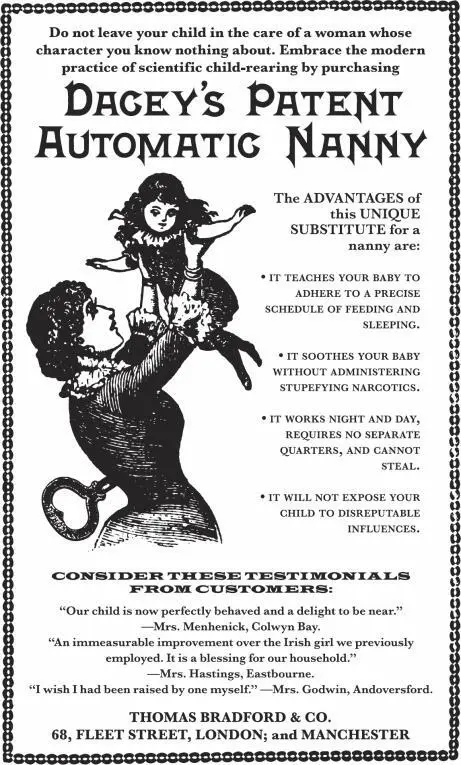Джефф Вандермеер - The Thackery T. Lambshead Cabinet of Curiosities
Здесь есть возможность читать онлайн «Джефф Вандермеер - The Thackery T. Lambshead Cabinet of Curiosities» весь текст электронной книги совершенно бесплатно (целиком полную версию без сокращений). В некоторых случаях можно слушать аудио, скачать через торрент в формате fb2 и присутствует краткое содержание. Жанр: Фэнтези, на английском языке. Описание произведения, (предисловие) а так же отзывы посетителей доступны на портале библиотеки ЛибКат.
- Название:The Thackery T. Lambshead Cabinet of Curiosities
- Автор:
- Жанр:
- Год:неизвестен
- ISBN:нет данных
- Рейтинг книги:5 / 5. Голосов: 1
-
Избранное:Добавить в избранное
- Отзывы:
-
Ваша оценка:
- 100
- 1
- 2
- 3
- 4
- 5
The Thackery T. Lambshead Cabinet of Curiosities: краткое содержание, описание и аннотация
Предлагаем к чтению аннотацию, описание, краткое содержание или предисловие (зависит от того, что написал сам автор книги «The Thackery T. Lambshead Cabinet of Curiosities»). Если вы не нашли необходимую информацию о книге — напишите в комментариях, мы постараемся отыскать её.
The Thackery T. Lambshead Cabinet of Curiosities — читать онлайн бесплатно полную книгу (весь текст) целиком
Ниже представлен текст книги, разбитый по страницам. Система сохранения места последней прочитанной страницы, позволяет с удобством читать онлайн бесплатно книгу «The Thackery T. Lambshead Cabinet of Curiosities», без необходимости каждый раз заново искать на чём Вы остановились. Поставьте закладку, и сможете в любой момент перейти на страницу, на которой закончили чтение.
Интервал:
Закладка:
It is indicative of the Victorian attitude toward children that at no point does Dacey suggest that children should be raised by their parents. Of his own participation in Lionel’s upbringing, he wrote, “I realize that my presence entails risk of the very dangers I wish to avoid, for while I am more rational than any woman, I am not immune to the boy’s expressions of delight or dejection. But progress can only occur one step at a time, and even if it is too late for Lionel to fully reap the benefits of my work, he understands its importance. Perfecting this machine means other parents will be able to raise their children in a more rational environment than I was able to provide for my own.”
For the manufacture of the Automatic Nanny, Dacey contracted with Thomas Bradford & Co., maker of sewing and laundry machines. The majority of the Nanny’s torso was occupied by a spring-driven clockwork mechanism that controlled the feeding and rocking schedule. Most of the time, the arms formed a cradle for rocking the baby. At specified intervals, the machine would raise the baby into feeding position and expose an India-rubber nipple connected to a reservoir of infant formula. In addition to the crank handle for winding the mainspring, the Nanny had a smaller crank for powering the gramophone player used to play lullabies; the gramophone had to be unusually small to fit within the Nanny’s head, and only custom-stamped discs could be played on it. There was also a foot pedal near the Nanny’s base used for pressurizing the waste pump, which provided suction for the pair of hoses leading from the baby’s rubber diaper to a chamber pot.
The Automatic Nanny went on sale in March 1901, with an advertisement appearing in the Illustrated London News (shown on the next page).
It is worth noting that, rather than promoting the raising of rational children, the advertising preys on parents’ fears of untrustworthy nursemaids. This may have just been shrewd marketing on the part of Dacey’s partners at Thomas Bradford & Co., but some historians think it reveals Dacey’s actual motives for developing the Automatic Nanny. While Dacey always described his proposed teaching engine as an assistive tool for governesses, he positioned the Automatic Nanny as a complete replacement for a human nanny. Given that nannies came from the working class, while governesses typically came from the upper class, this suggests an unconscious class prejudice on Dacey’s part.
Whatever the reasons for its appeal, the Automatic Nanny enjoyed a brief period of popularity, with over 150 being sold within six months. Dacey maintained that the families that used the Automatic Nanny were entirely satisfied with the quality of care provided by the machine, although there is no way to verify this; the testimonials used in the advertisements were likely invented, as was customary at the time.
What is known for certain is that in September 1901, an infant named Nigel Hawthorne was fatally thrown from an Automatic Nanny when its mainspring snapped. Word of the child’s death spread quickly, and Dacey was faced with a deluge of families returning their Automatic Nannies. He examined the Hawthornes’ Nanny, and discovered that the mechanism had been tampered with in an attempt to enable the machine to operate longer before needing to be rewound. He published a full-page ad, in which—while trying not to blame the Hawthorne parents—he insisted that the Automatic Nanny was entirely safe if operated properly, but his efforts were in vain. No one would entrust their child to the care of Dacey’s machine.

To demonstrate that the Automatic Nanny was safe, Dacey boldly announced that he would entrust his next child to the machine’s care. If he had successfully followed through with this, he might have restored public confidence in the machine, but Dacey never got the chance, because of his habit of telling prospective wives of his plans for their offspring. The inventor framed his proposal as an invitation to partake in a grand scientific undertaking, and was baffled that none of the women he courted found this an appealing prospect.
After several years of rejection, Dacey gave up on trying to sell the Automatic Nanny to a hostile public. Concluding that society was not sufficiently enlightened to appreciate the benefits of machine-based child care, he likewise abandoned his plans to build a teaching engine, and resumed his work on pure mathematics. He published papers on number theory and lectured at Cambridge until his death in 1918, during the global influenza pandemic.
The Automatic Nanny might have been completely forgotten were it not for the publication of an article in the London Times in 1925, titled “Mishaps of Science.” It described in derisive terms a number of failed inventions and experiments, including the Automatic Nanny, which it labeled “a monstrous contraption whose inventor surely despised children.” Reginald’s son, Lionel Dacey, who by then had become a mathematician himself and was continuing his father’s work in number theory, was outraged. He wrote a strongly worded letter to the newspaper, demanding a retraction, and when they refused, he filed a libel suit against the publisher, which he eventually lost. Undeterred, Lionel Dacey began a campaign to prove that the Automatic Nanny was based on sound and humane child-rearing principles, self-publishing a book about his father’s theories on raising rational children.
Lionel Dacey refurbished the Automatic Nannies that had been in storage on the family estate, and in 1927 offered them for commercial sale again, but was unable to find a single buyer. He blamed this on the British upper class’s obsession with status; because household appliances were now being marketed to the middle class as “electric servants,” he claimed upper-class families insisted on hiring human nannies for appearance’s sake, whether they provided better care or not. Those who worked with Lionel Dacey blamed it on his refusal to update the Automatic Nanny in any way; he ignored one business advisor’s recommendation to replace the machine’s spring-driven mechanism with an electric motor, and fired another who suggested marketing it without the Dacey name.
Like his father, Lionel Dacey eventually decided to raise his own child with the Automatic Nanny, but rather than look for a willing bride, he announced in 1932 that he would adopt an infant. He did not offer any updates in the following years, prompting a gossip columnist to suggest that the child had died at the machine’s hands, but by then there was so little interest in the Automatic Nanny that no one ever bothered to investigate.
The truth regarding the infant would never have come to light if not for the work of Dr. Thackery Lambshead. In 1938, Dr. Lambshead was consulting at the Brighton Institute of Mental Subnormality (now known as Bayliss House) when he encountered a child named Edmund Dacey. According to admission records, Edmund had been successfully raised using an Automatic Nanny until the child was two years old, the age at which Lionel Dacey felt it appropriate to switch him to human care. He found that Edmund was unresponsive to his commands, and shortly afterwards, a physician diagnosed the child as “feebleminded.” Judging such a child an unsuitable subject for demonstration of the Nanny’s efficacy, Lionel Dacey committed Edmund to the Brighton Institute.
What prompted the institute’s staff to seek Dr. Lambshead’s opinion was Edmund’s diminutive stature: although he was five, his height and weight were that of the average three-year-old. The children at the Brighton Institute were generally taller and healthier than those at similar asylums, a reflection of the fact that the institute’s staff did not follow the still-common practice of minimal interaction with the children. In providing affection and physical contact to their charges, the nurses were preventing the condition now known as psychosocial dwarfism, where emotional stress reduces a child’s levels of growth hormones, and which was prevalent in orphanages at the time.
Читать дальшеИнтервал:
Закладка:
Похожие книги на «The Thackery T. Lambshead Cabinet of Curiosities»
Представляем Вашему вниманию похожие книги на «The Thackery T. Lambshead Cabinet of Curiosities» списком для выбора. Мы отобрали схожую по названию и смыслу литературу в надежде предоставить читателям больше вариантов отыскать новые, интересные, ещё непрочитанные произведения.
Обсуждение, отзывы о книге «The Thackery T. Lambshead Cabinet of Curiosities» и просто собственные мнения читателей. Оставьте ваши комментарии, напишите, что Вы думаете о произведении, его смысле или главных героях. Укажите что конкретно понравилось, а что нет, и почему Вы так считаете.












